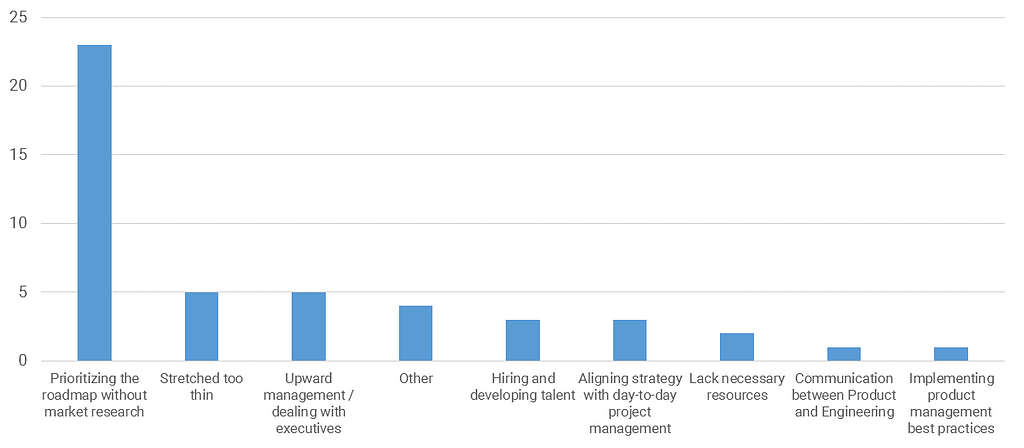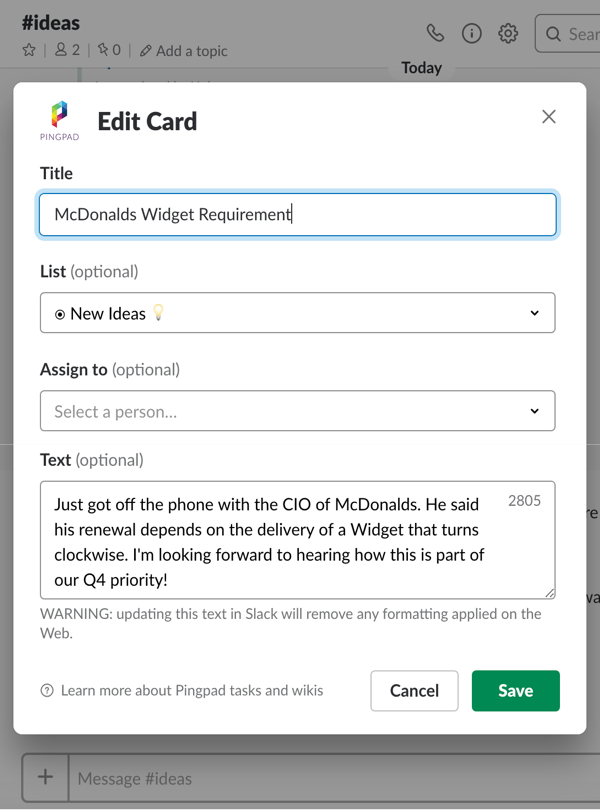Latest news about Bitcoin and all cryptocurrencies. Your daily crypto news habit.

Ever since the Product Manager role was created to bring decision making as close to customers as possible, it has been an art and science of collaborating with stakeholders. The problem today is how to scale collaboration with your stakeholders, when the signal-to noise ratio is out of control:
- Customers overwhelmed with choice and information to inform buying decisions, and have less time to engage
- Markets more competitive, global, connected, and constantly disrupted
- Information overload permeates inside the enterprise with a constant real time flow
- Your internal stakeholders (management, engineering, design, sales, marketing, support and customer success) are overwhelmed and hard to align
The problem is all this noise keeps Product Managers from collaborating efficiently and effectively with their stakeholders — especially from collaborating with customers to create a breakthrough product. A good product manager keeps things organized in spreadsheets and has amazing communication disciplines that hold it all together. But those practices and tools don’t scale and it gets harder every day to find the signal in the noise.
The biggest challenge Product Managers say they face, by far, is setting roadmap priorities based on market feedback:
 Mind the Product survey says PMs aren’t able to mind the customers
Mind the Product survey says PMs aren’t able to mind the customers
This is because of poor collaboration with customers and internal stakeholders. Getting close to customers, understanding their needs and working to deeply understand the problem to be solved and job to be done requires:
- Connecting directly with customers
- Connecting with sales, support and customer success to source product ideas, validate priorities and roadmap
 PM Stakeholders, from a great post on the unspoken challenges of a product manager by Nathan Allsopp
PM Stakeholders, from a great post on the unspoken challenges of a product manager by Nathan Allsopp
- Prioritizing, visually planning and creating a roadmap; and engaging all stakeholders proactively before, during and after the process
- Executing the role of Product Owner with the design and engineering teams, and being responsive to change
- Doing all this through workflows that automate communication and coordination where possible
- Doing all this while documenting decisions (most important job of a PM according to Josh Elman)
That is, a lot.
Ok, let’s solve this problem.
I’ve built collaboration software for most of my career and find nothing more fulfilling than solving these real human problems so groups achieve goals and work is a joy in-balance. I’ve worked with amazing Product Managers and within world-class product organizations (LinkedIn). We went through our own product discovery to get here, got closer to customers, and found some common problems to solve for great companies.
The good news on the tools front is the rise of group messaging like Slack means your stakeholders are engaged, so workflows can be orchestrated better than ever, and there is a knowledge flow that can be turned into a knowledge stock.

 💡easy product idea contribution on Slack with Pingpad
💡easy product idea contribution on Slack with Pingpad
What we’ve learned is Product Management can move faster, continuously improve and scale through collaboration. Here’s the how:
- Establish an Ideas Bot and Board. Engage Sales, Support and Customer success to contribute Product Ideas easily through Slack. Visualize, prioritize and keep stakeholders informed throughout the workflow.
- Visual Planning and Roadmaps supported by collaboration features (eg real-time editable docs, synched Slack threads)
- Portfolio, Project and Task Workflows aligned with your planning priorities so things don’t slip through the cracks, and adjustable on the fly as things change
- Create a Customer and Product Knowledge Base, with easy contribution from Slack that captures context, with wiki and custom field flexible structures, that allows you to bring knowledge into Slack conversations fast.
Setting up these collaborative workflows aligns your stakeholders and gives you time to focus on the important decisions. The net result is a workflow that gets you customer insight, focused planning conversations, clear plans and progress tracking, and a knowledge flow turned into a knowledge stock the broader Product Team can leverage. You gain a new alignment, between Product and the Field in particular, as you close the gap between what customers are saying and what you provide them.
This is achieved through a combination of implementing a new tool, and the collaborative practices that make it work. To get started, add Pingpad to Slack and contact me through pingpad.net.
Also check out this guest post by PM Chris Mann: Product Managers — Here is how to leverage Slack to automate your workflow, get closer to your customer and build breakthrough products.
Icon credit to Aenne Brielmann
The Product Manager Problem was originally published in Hacker Noon on Medium, where people are continuing the conversation by highlighting and responding to this story.
Disclaimer
The views and opinions expressed in this article are solely those of the authors and do not reflect the views of Bitcoin Insider. Every investment and trading move involves risk - this is especially true for cryptocurrencies given their volatility. We strongly advise our readers to conduct their own research when making a decision.
